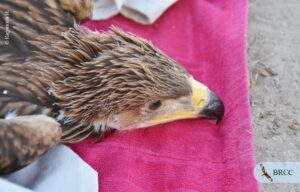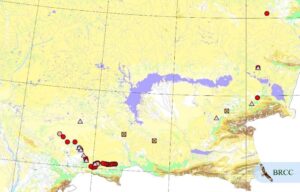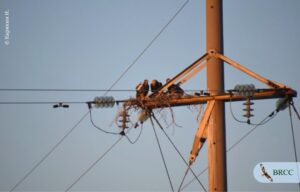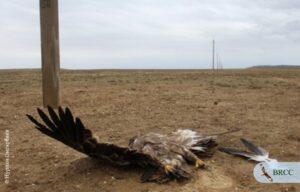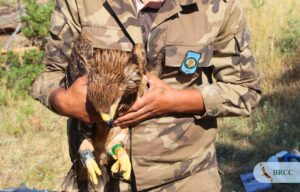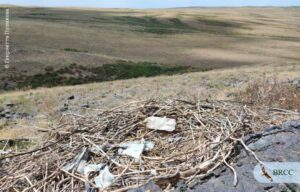Imperial Eagle
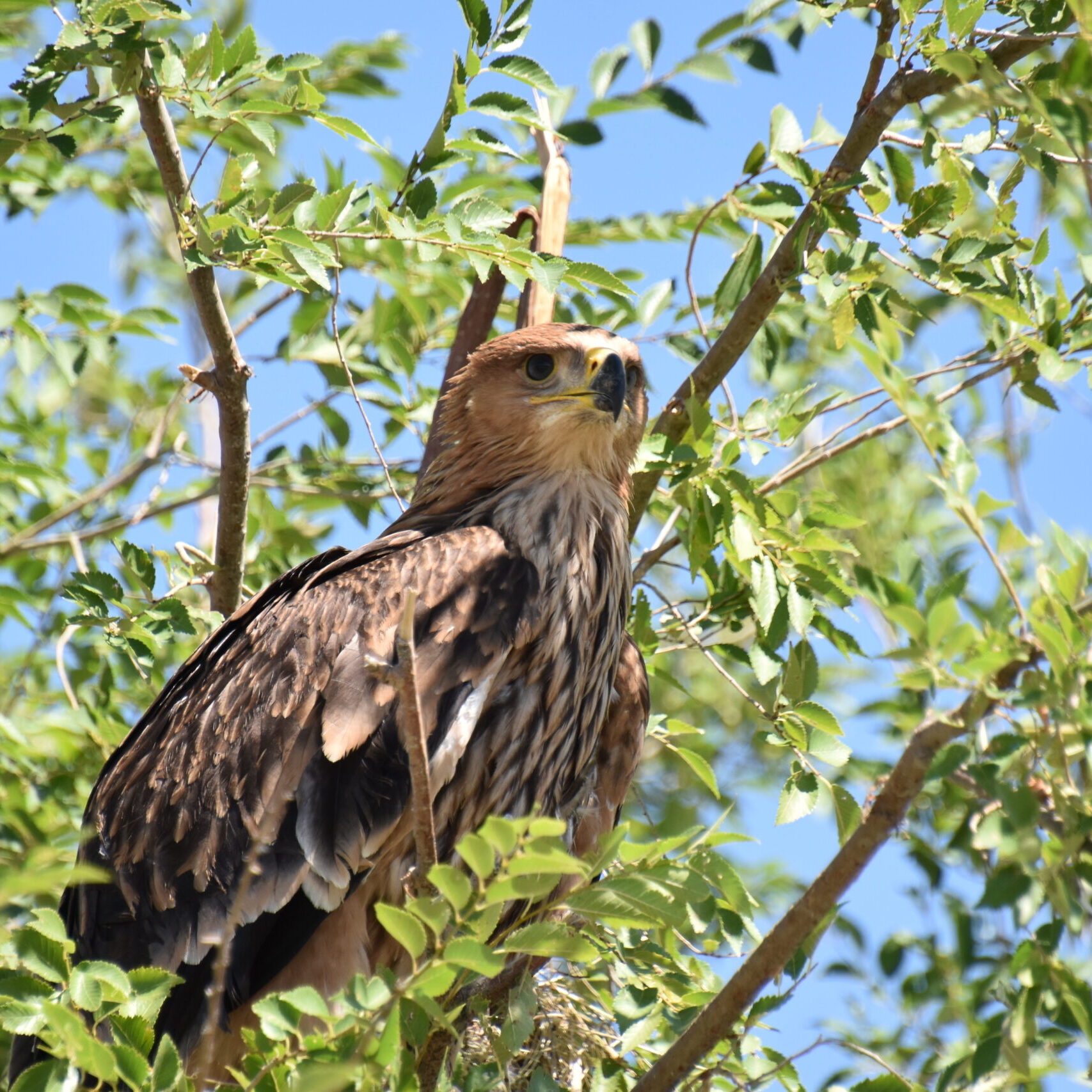
Imperial eagle (Aquila heliaca) is a large eagle inhabiting semi-deserts, steppes, and forest-steppes, nesting is associated mainly with woody vegetation. The estimate of the species abundance for 2008–2020 in Kazakhstan was 3420–4260 pairs (RRRCN). The number of species is gradually growing. The world's largest Imperial Eagle population group is located in western Kazakhstan.
Conservation status
Vulnerable (VU) listed by the International Union for Conservation of Nature (IUCN);
“Rare, occurring in small quantities” (Category III) in the Red Book of the Republic of Kazakhstan (PDF link);
Included in Appendix I in the CITES Convention;
Included in the List of rare and endangered animal species of the Republic of Kazakhstan.
Appearance
A dark eagle with ochre or red feathers on the neck, the main feature is several white feathers on the back, in the scapular region, located in no particular order on each side of the back. The tail is brown, with a dark marble pattern and a wide black apical stripe. The undertail feathers are light, contrasting with the rest of the dark bottom. Juveniles have a characteristic very light (to pale ochre) body coloration with brown longitudinal spots-strokes on the underside, which can merge into a transverse stripe on the chest. There are no pure white marks on the back. The lower back and upper tail are even lighter than the rest of the upper body. There are stripes formed by light edges of coverts on the upper surface of the wing, as well as along the trailing edge of the wings and tail. Adult plumage is acquired by the age of about 5, gradually becoming darker (kz.birding.day).
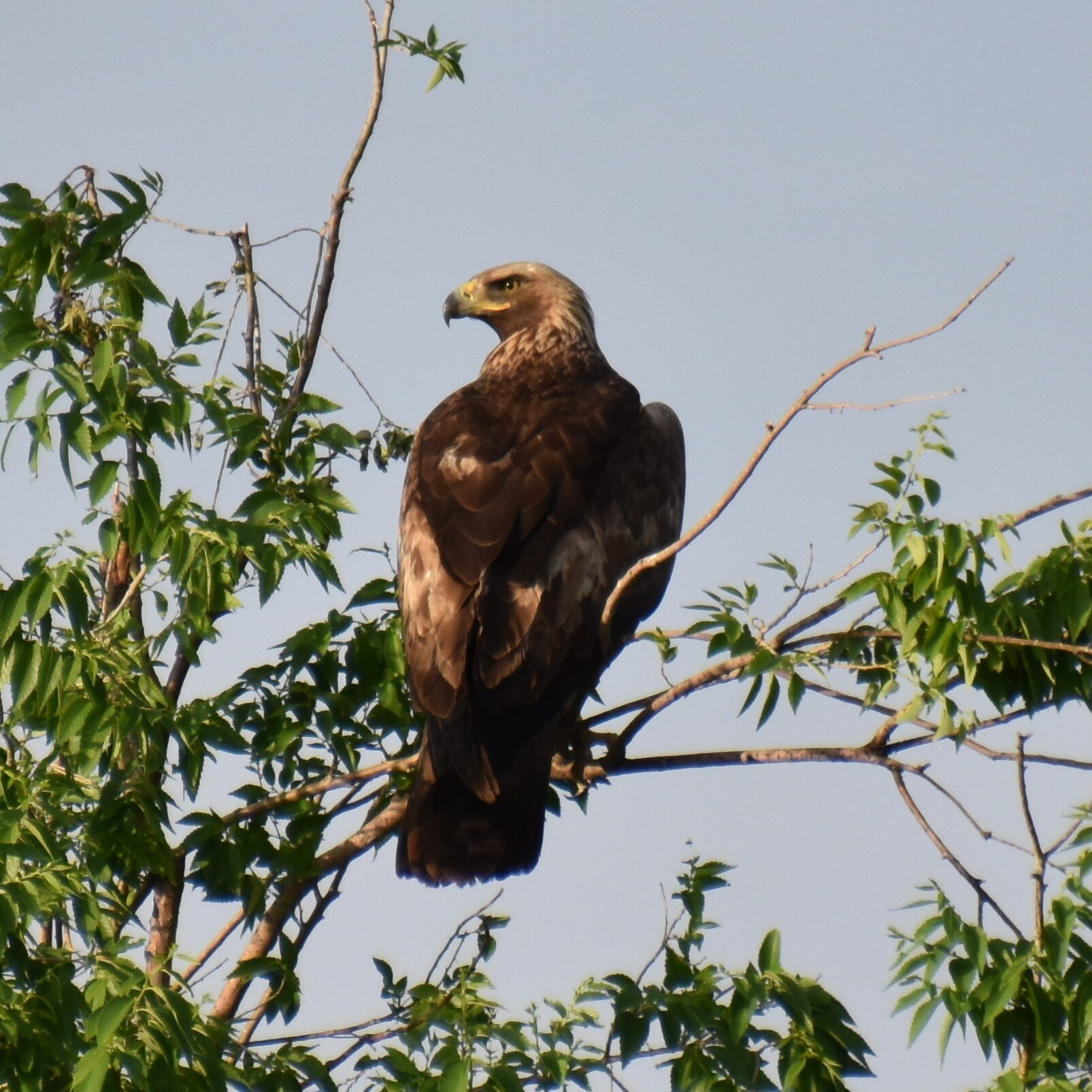
Species distribution
Breeds widely in plains and foothills north to Urda, Naurzum, Kyzyltau, Semey, Kalba, and foothills of Southern Altai. On roaming and migration occurs almost everywhere. In winter, it is sometimes found in Kalba, in the Western Altai, in the Chu valley and on the island of Barsa-Kelmes (kz.birding.day).
Threats
- Habitat loss;
- Death from an electric shock on overhead power lines (OPL) with a capacity of 6-10 kV.
- Disturbance during the nesting period in open habitats;
- Removal of chicks by local residents, who believe that this is a Golden Eagle.

